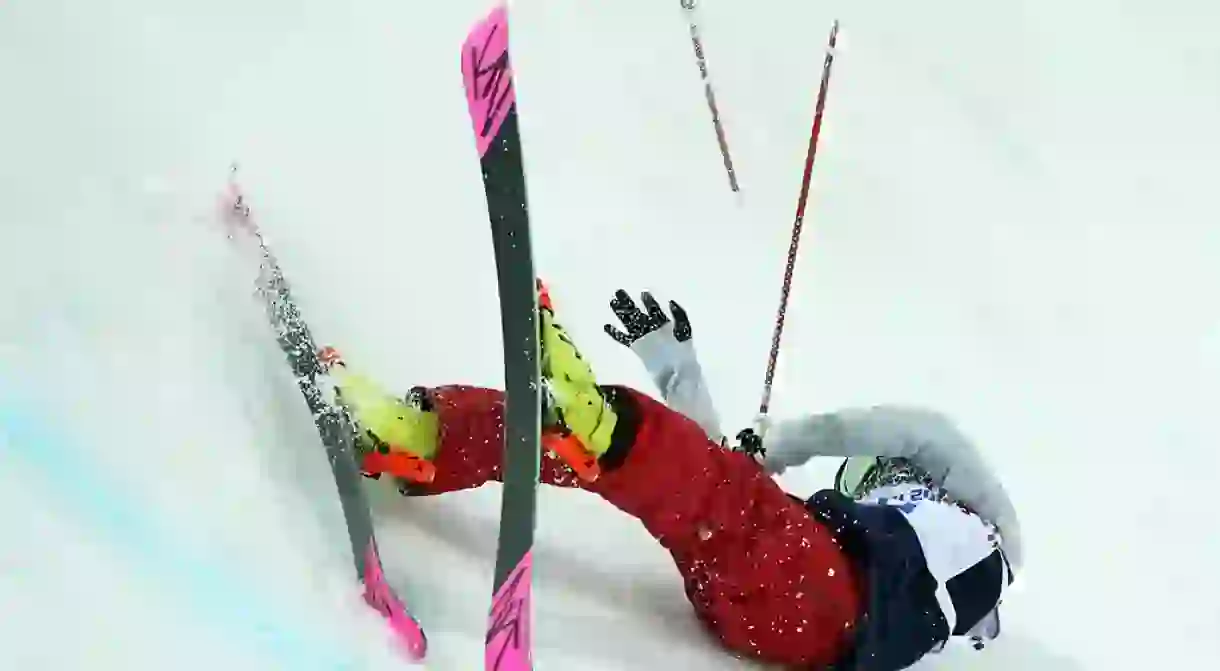The Most Dangerous Winter Olympic Sports

Studies have shown that the Winter Olympics are more dangerous than the Summer Olympics. Participants in the cold-weather games are going through events at faster speeds and spend more time in the air than those competing in warm-weather sports.
More than one in 10 athletes at the past two Winter Olympics—2014 Sochi and 2010 Vancouver—were injured at the Games, according to studies by the International Olympic Committee (IOC). The studies are published in the British Journal of Sports Medicine after each Games, with researchers asking countries’ national medical teams and the clinics in the athletes’ village to report each injury.
With the 2018 Winter Olympics beginning Feb. 9 in Pyeongchang, South Korea, it’s time to take a look at the most dangerous Winter Games events, according to studies by the IOC.
Ski aerials
Not surprisingly, skiers speeding downhill, launching off a ramp, and spending seconds in air while completing jaw-dropping twists and flips is the most dangerous sport in the Winter Olympics. A whopping 49% of participants at the 2014 Sochi Olympics were injured during this event (up from 19% at 2010 Vancouver).
Snowboard cross
Also known as boardercross, this event involves multiple participants racing downhill through a narrow course equipped with various jumps, berms, and drops. Thirty-four percent of participants were injured during the 2014 Sochi Olympics in this discipline.
Slopestyle snowboard
More than one in every three participants (37%) in this event, which debuted at 2014 Sochi, were injured. Slopestyle snowboard (and skiing) involves competitors riding downhill while testing their mettle on a variety of slopes, rails, and jumps. Competitors are judged on the height of their jumps, degree of difficulty of their tricks, execution of said tricks, and the whole combined package.
Slopestyle skiing

Similar to slopestyle snowboard, except on skis, participants race downhill while performing tricks on the variety of terrain park features. Roughly one in three participants of this event (31%) were injured at 2014 Sochi.
Ski halfpipe
Looking for big air? Look no further than any of the halfpipe events. Participants ride up and down the curved feature, hanging in the air for what seems like forever while twisting, flipping, and turning. This event, similar to the snowboard halfpipe, made its debut at the 2014 Games in Sochi with 26% of participants getting injured.
Ski moguls
This bumpy race can take a toll on participants’ legs and lower bodies as they race downhill through a series of mini hills and bumps. Participants are judged on their turns, jumps, and speed. One in four participants (25%) of this event at 2014 Sochi got hurt, up from 2% at 2010 Vancouver.
Snowboard halfpipe

Less participants on a snowboard were injured in the halfpipe event than those on skis. Eighteen percent of snowboard halfpipe competitors were injured at the 2014 Games, a slight increase from 13% at 2010 Vancouver.
Bobsleigh
Individuals or teams of two or four pile into a sled and maneuver down an icy track at speeds of 80+ mph while trying to avoid grazing the sides of the track. Bobsleigh, surprisingly, is toward the bottom of dangerous Winter Olympic sports with 18% of competitors at 2014 Sochi having gotten injured, slightly down from 20% at 2010 Vancouver.
Other less-dangerous Winter Olympic sports: ski cross (14%), hockey (11%), short-track speed skating (9%).













